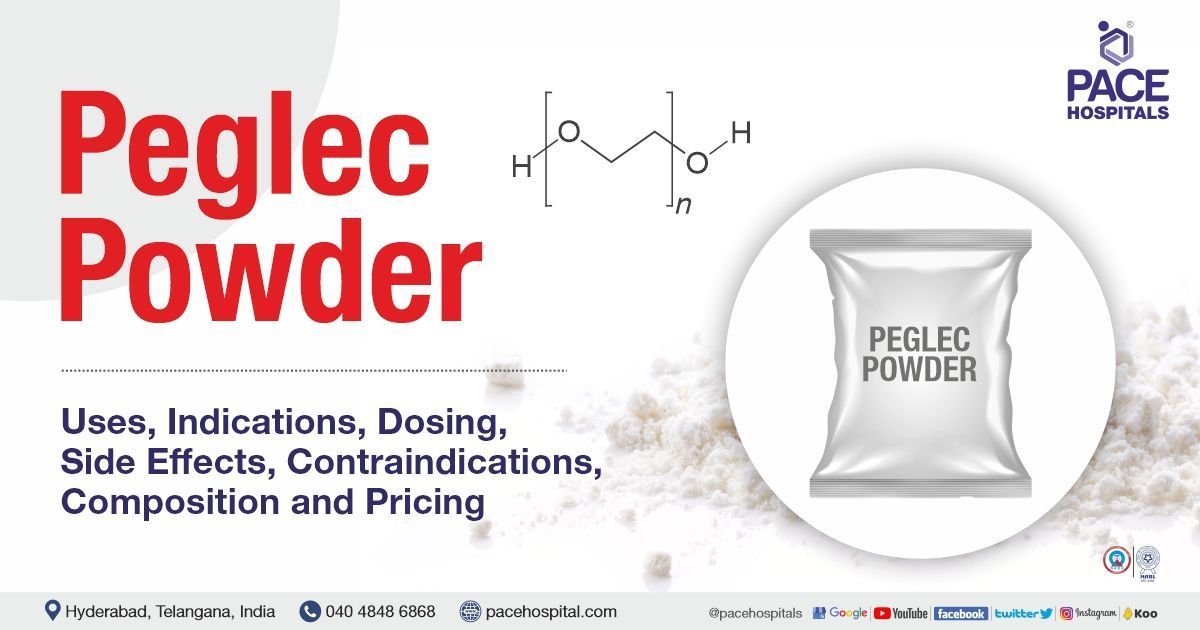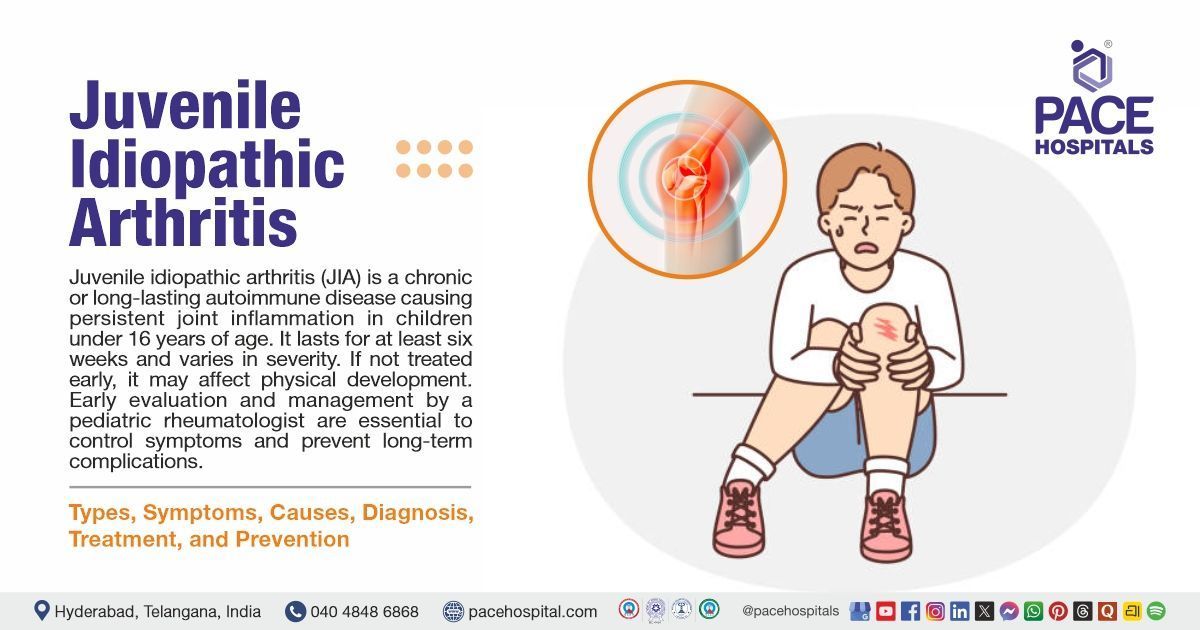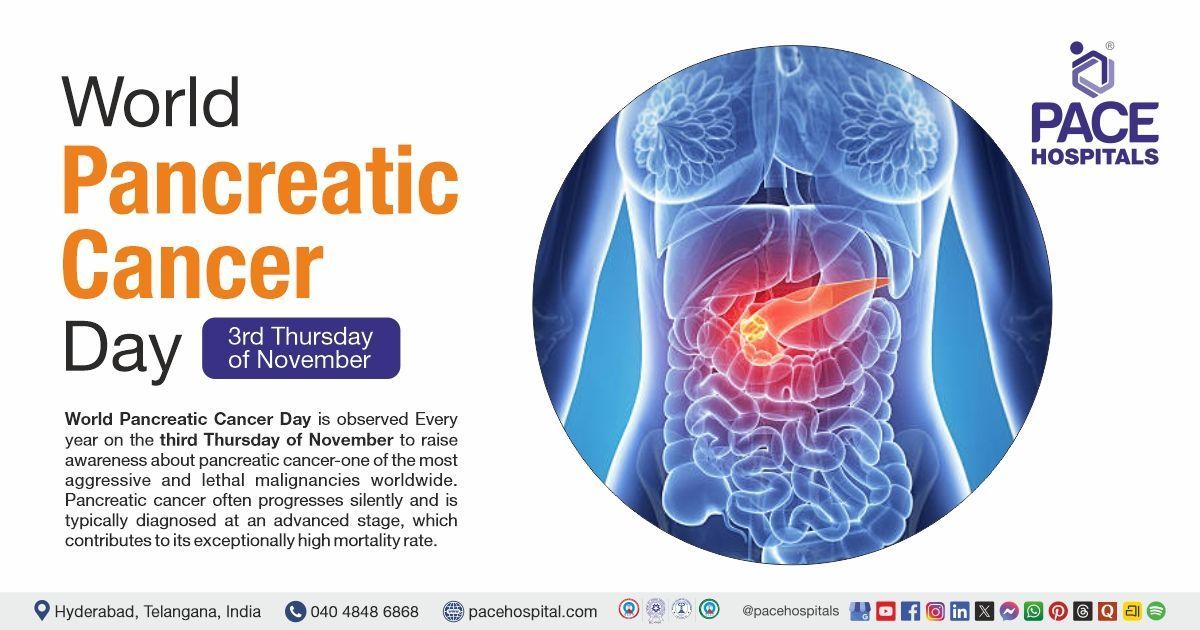Peglec Powder - Uses, Preparation, Side Effects, Composition and Price
Pace Hospitals
Peglec Powder is a common bowel cleanser used to prepare the digestive tract for colorectal and hysterectomy surgeries, as well as for barium enema X-rays and colonoscopies. It can also be used to treat persistent constipation.
Overview of Peglec Powder
- Peglec powder contains a combination of PEG and electrolytes, which acts as an osmotic laxative and is usually indicated prior to the colonoscopy and barium enema X-ray examinations.
- It is also administered for bowel cleaning (cleaning the colon and flushing out from the large intestine) and gut preparations in colorectal and hysterectomy (surgical operation to remove the uterus) surgeries.
- Peglec powder is available as prescription drug in pharmacies and is to be used as directions given by the physician/manufacturer.
- It is available only in sachet form, i.e., to be reconstituted with water.
Peglec Powder uses
- Peglec powder is used before the colonoscopy (endoscopic examination of the large intestine through a flexible tube called a colonoscope) and barium enema X-ray (exam used to detect the changes in the colon of the large intestine by injecting the barium) to clear bowel movements.
- It is used prior to colorectal and hysterectomy surgeries for gut preparation; also to treat chronic constipation in patients older than 17.
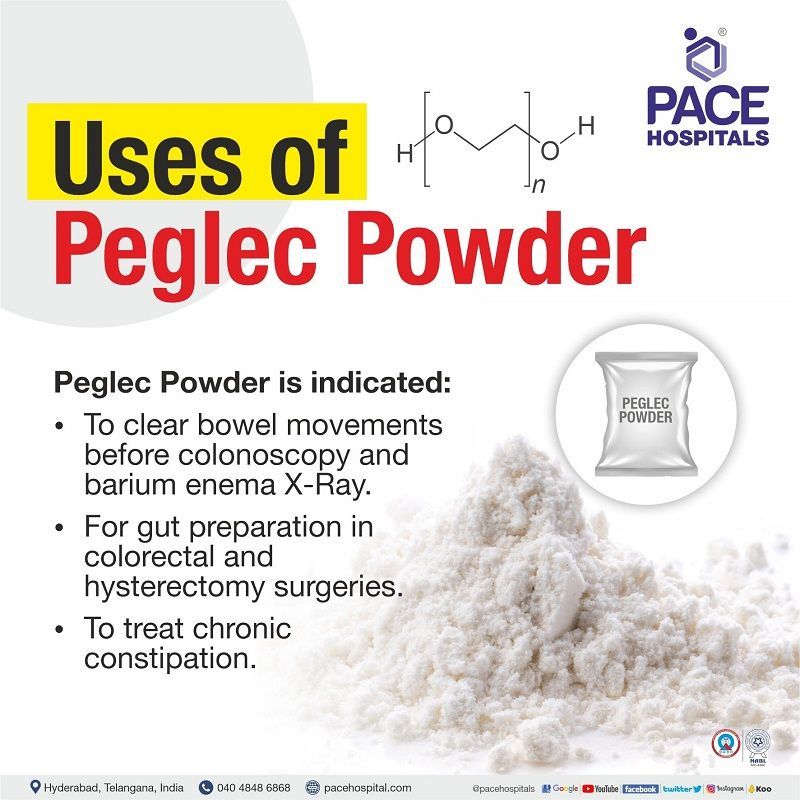
General considerations and instructions to follow while taking Peglec Powder
The day before the colonoscopy, take clear liquids and avoid red or purple drinks (PEG molecules interact with dyes and change the aggregate groups of dye molecules through separating effect and leading to performance alteration).
The patient is advised to drink the following liquids:
- Fat-free bouillon (a beverage made from vegetables or dehydrated meat) or broth,
- Strained fruit juice
- Water
- Plain coffee
- Plain tea
- Sports drinks
- Gelatine
Patients should be clear that no solid food is taken for 1 to 2 days before the procedure. Preparation and administration of Peglec powder for gut preparation are as follows:
- Take a sachet of Peglec and completely dissolve in 2 litres of water, then pour into a cup of 200 ml and take a sum of 5 cups in 1 hour.
- Administer the complete solution of 2 litres within 2 hours. The first bowel movement occurs 1 hour after administering the first dose.
- Administer the complete solution until the rectal way is clear.
- Peglec powder is not mentioned for direct ingestion. The powder should be dissolved in water before administration and must shake firmly to dissolve the drug uniformly.
(Note: The preparation mentioned above is only for the gut preparation before surgeries or colonoscopy, the preparation procedure for other indications will be changed based on the type and severity of the condition)
Peglec Powder mechanism of action
Peglec powder contains an active ingredient polyethylene glycol, an osmotic laxative (draws water from the body to the bowel by osmosis principle). PEG forms hydrogen bonds with the water molecules and prevents water reabsorption, recollects the water from the lumen in the colon and increases the osmotic pressure to make the stools pass easier. Osmotic laxatives are generally poor absorbers and draw water from the lumen.
Peglec Powder indications
Peglec powder is indicated:
- To clear bowel movements before colonoscopy and barium enema X-ray.
- For gut preparation in colorectal and hysterectomy surgeries.
- To treat chronic constipation.
Peglec Powder dosage
Dosage forms and strengths of Peglec powder
Peglec is available in powdered sachet and to be reconstituted with water. Peglec powder 137.15 gm sachet contains:
- Polyethylene Glycol: 118 g
- Sodium Chloride: 2.93 g
- Potassium Chloride: 1.484 g
- Sodium Bicarbonate: 3.37 g
- Anhydrous Sodium Sulphate: 11.36 g
Peglec powder dosage for adults:
For gut preparation and bowel cleaning prior to surgeries:
- Take a sachet of Peglec and fully dissolve it in 2 litres of water. Pour the mixture into a 200 ml cup and consume 5 cups in a single hour by taking it in 5 divided frequencies. Give the entire 2-litre solution within 2 hours of the first dosage; the first bowel movement usually happens within an hour. As soon as the rectal passage is clear, administer the entire solution.
For chronic constipation:
- The usual dose of Peglec powder for constipation for chronic constipation is 17g of PEG once per day in 4 to 8 ounces of water, juice, soda, coffee, or tea is recommended. PEG should not exceed two weeks in constipation patients unless instructed by the physician.
Note: Thorough medical examination, medical history, and present complaints of the patients need to be evaluated by the physician before the usage of Peglec powder.
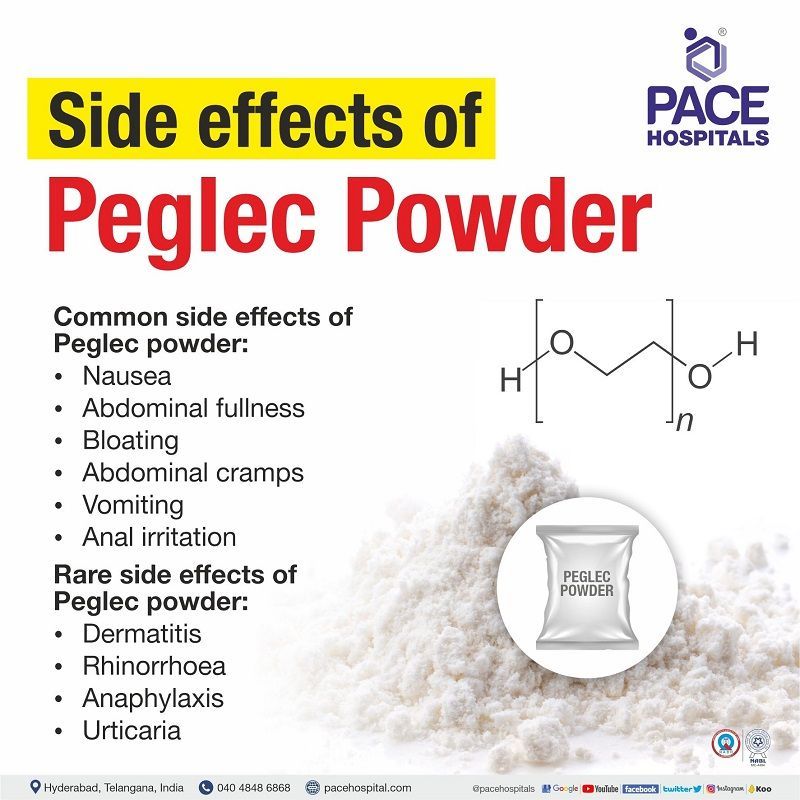
Peglec Powder side effects
Peglec powder is generally safe, and it doesn’t cause any side effects. However, in some cases, it can cause some side effects, including:
Common side effects of Peglec powder:
- Nausea
- Abdominal fullness
- Bloating (gas build-up in the stomach)
- Abdominal cramps (pain in the abdominal wall)
- Vomiting
- Anal irritation
Rare side effects of Peglec powder:
- Dermatitis (skin inflammation)
- Rhinorrhoea (drainage from the nose)
- Anaphylaxis (severe allergic reaction)
- Urticaria (skin rash)
Serious side effects of Peglec powder (in adults >60 years):
- GI bleeding from Mallory-Weiss Tear (split in the oesophagus caused by forceful vomiting)
- Oesophageal perforation (hole in the oesophagus)
- Asystole (absence of heartbeats)
- Sudden dyspnoea (shortness of breath) with pulmonary oedema (swelling due to excess fluid)
- “Butterfly-like” infiltrates on chest X-ray after vomiting and aspirating PEG
Note: If you experience any severe side effects or serious reactions, immediately seek medical attention by visiting the hospital or physician.
Peglec Powder contraindications
Peglec powder is contraindicated in patients with the following conditions:
- Gastrointestinal obstruction
- Ileus (cut off blood supply to the intestine) or gastric retention.
- Bowel perforation (injury to the mucosa of the bowel wall)
- Toxic colitis (inflammation of the colon) or toxic megacolon (a deadly complication of colon inflammation).
- Hypersensitivity to any of the Peglec component
- Appendicitis (inflammation of the appendix)
- Inflammatory bowel disease (inflammation of the digestive tract)
Effect of Peglec Powder use in specific populations
Peglec powder in pregnancy:
In pregnant women, Peglec is considered as a Category-C drug. Studies have not been conducted in animals and humans, but the systemic absorption of PEG is poor, and thereby it may cause less side effects or not in foetus and neonates. Peglec powder is advised in pregnant patients if it is surely needed. Despite the studies, the American Family Doctor's Association considered the PEG a drug of choice in chronic constipation for pregnant women.
Peglec powder in nursing mothers:
Till now, there is no evidence that the PEG drug is excreted in milk. Caution is needed when administering it to nursing mothers.
Peglec powder in paediatrics:
Safety and efficacy have not been established in paediatric patients. Despite this, the recommendations from ESPGHAN (The European Society for Paediatric Gastroenterology Hepatology and Nutrition) and NASPGHAN (North American Society for Paediatric Gastroenterology, Hepatology and Nutrition) have stated that the loading dose in chronic constipation is 0.2 mg/kg/day followed by a maintenance dose of 0.8 mg/kg/day respectively. The dosing schedule should be at least two months or gradually decrease after resolving the symptoms in the first month.
Peglec powder in renal impairment patients:
There is no dosage adjustment regarding renal impairment patients from the manufacturer's leaflet, but it should be used with caution in renal impairment patients who are taking diuretics and antihypertensives. Post-colonoscopy laboratory tests should be performed on these patients after the colonoscopy.
Peglec powder in hepatic impairment patients:
The manufacturer's leaflet has no dosage adjustment in hepatic impairment patients.
Peglec powder in geriatrics:
The manufacturer's leaflet has no dosage adjustment in geriatric patients.
Peglec Powder interactions with other drugs
A drug interaction is a response between two or more drugs, food, or supplements leading to the undesired response.
A wide range of effects could be expected when Peglec powder is given in combination with the following drugs:
- Digoxin: Causes changes in pharmacokinetics (response of the body to a drug) of digoxin.
- Drugs causing electrolyte abnormalities: Increases the risk of adverse events like arrhythmias (irregular heartbeats), seizures (involuntary muscle movements) and QT interval prolongation.
- Stimulant laxatives: On coadministration, it increases the risk of mucosal ulceration in the GI tract.
Note: On discussion with your physician, they may advise you to avoid or take an alternative drug or maintain a time gap if any of the above-prescribed medicines are to be taken together.
Peglec Powder price in India
Maximum retail price as per year 2023: ₹ 459 for a 137.15 gram packet. Peglec Powder is available at mostly each and every pharmacies.
Share on
Request an appointment
Fill in the appointment form or call us instantly to book a confirmed appointment with our super specialist at 04048486868

